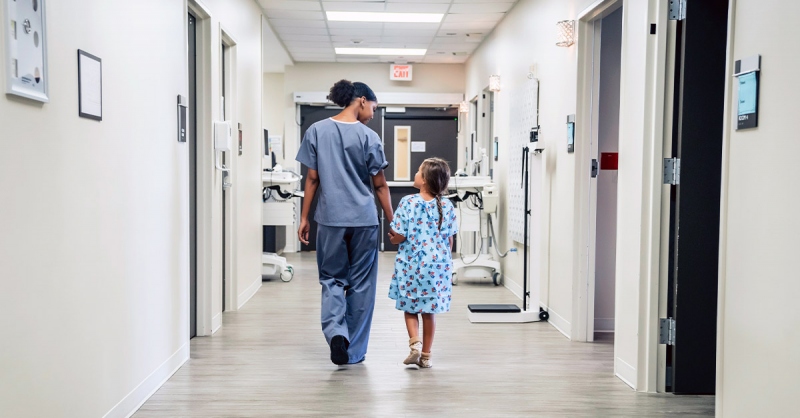Approximately every minute and 40 seconds, a child or young person under the age of 20 was newly infected with HIV in 2019, bringing the total number of children living with HIV to 2.8 million, Unicef said in a report released on Thursday

In a report released on Thursday, Unicef stated that approximately every minute and 40 seconds, a child or young person under the age of 20 was newly infected with HIV in 2019, bringing the total number of children living with HIV to 2.8 million. The report further noted covid-19 disruptions to HIV service delivery in one third of high burden countries.
The report—Reimagining A Resilient HIV Response For Children, Adolescents And Pregnant Women Living With HIV—warned that children are being left behind in the fight against HIV. Prevention efforts and treatment for children remain some of the lowest among key affected populations, the report said. In 2019, a little more than half of children worldwide had access to life-saving treatment, significantly lagging behind coverage for both mothers (85%) and all adults living with HIV (62%). Nearly 110,000 children died of AIDS that year, the Unicef report said.
Despite some progress in the decades-long fight against HIV and AIDS, deep regional disparities persist among all populations, especially for children, the report noted. Paediatric coverage of antiretroviral treatment (ART) is highest in West Asia and North Africa, at 81%, followed by South Asia (76%), Eastern and Southern Africa (58%), East Asia and the Pacific (50%), Latin America and the Caribbean (46%) and West and Central Africa (32%).
“Even as the world struggles in the midst of an ongoing global pandemic, hundreds of thousands of children continue to suffer the ravages of the HIV epidemic," said Unicef executive director Henrietta Fore. “There is still no HIV vaccine. Children are still getting infected at alarming rates, and they are still dying from AIDS. This was even before covid-19 interrupted vital HIV treatment and prevention services putting countless more lives at risk," Fore added.
The covid-19 crisis has further exacerbated inequities in access to life-saving HIV services for children, adolescents and pregnant mothers everywhere, the global agency said.
In a recent Unicef survey of 29 HIV-priority countries, one third responded that service coverage for children, adolescents and women living with and vulnerable to HIV is lower by 10% or more compared with pre-pandemic numbers.
UNAIDS’ HIV service disruption data, cited in the report, further illustrate the impact of necessary control measures, supply chain disruptions, lack of personal protective equipment, and the redeployment of healthcare workers on HIV services.
In the months of April and May, coinciding with partial and full lockdowns, paediatric HIV treatment and viral load testing in children in some countries declined between 50 to 70%, and new treatment initiation fell by 25 to 50%.
Similarly, health facility deliveries and maternal treatment were also reported to have reduced by 20 to 60%, maternal HIV testing and ART initiation declined by 25 to 50%, and infant testing services declined by approximately 10%. Though the easing of control measures and the strategic targeting of children and pregnant mothers have successfully led to a rebound of services in recent months, challenges remain, and the world is still far from achieving the global 2020 paediatric HIV targets, Unicef said.
The global figures as mentioned in the report stated that 150,000 children aged 0-9 years were newly infected with HIV, bringing the total number of children in this age group living with HIV to 1.1 million. It also said that 170,000 adolescents aged 10-19 were newly infected with HIV, bringing the total number of adolescents living with HIV to 1.7 million. Also, 130,000 adolescent girls were newly infected with HIV in 2019, compared with 44,000 adolescent boys. Further, the total number of AIDS-related deaths of children and adolescents was 110,000; 79,000 aged 0-9 years and 34,000 aged 10-19.
“Mothers’ access to antiretroviral therapy to prevent the transmission of the virus to their babies increased globally to 85% and early infant diagnosis reached 60%," the report said. “The number of pregnant women living with HIV was 1.3 million; an estimated 82,000 children under the age of five were infected during pregnancy or birth and 68,000 were infected during breastfeeding," it said.
The report called on all governments to protect, sustain and accelerate progress in fighting childhood HIV by maintaining essential health services and strengthening health systems.
Union health minister Harsh Vardhan last week said that India protected the gains made in HIV prevention during the covid-19 pandemic. However, he said, that newer vulnerabilities and risks exacerbated by the pandemic warrant a graded and coordinated response.
• 150,000 children aged 0-9 years were newly infected with HIV, bringing the total number of children in this age group living with HIV to 1.1 million
• 170,000 adolescents aged 10-19 were newly infected with HIV, bringing the total number of adolescents living with HIV to 1.7 million
• 130,000 adolescent girls were newly infected with HIV in 2019, compared with 44,000 adolescent boys
• Total number of AIDS-related deaths of children and adolescents was 110,000; 79,000 aged 0-9 years and 34,000 aged 10-19
• An earlier report by Unicef stated that an estimated 120,000 children and adolescents aged 0-19 were living with HIV in India in 2017, the highest number in South Asia
• The report also had warned that around 80 adolescents will be dying of AIDS every day globally by 2030 if progress in preventing transmission is not accelerated